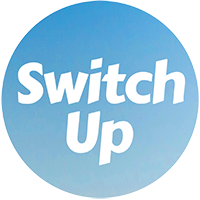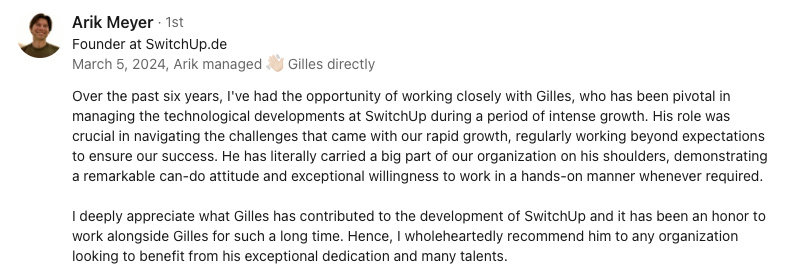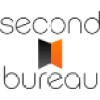Abstract:
The freelance economy has undergone significant growth, transforming the way businesses operate and individuals pursue their careers. This shift has been fueled by the expansion of freelancing platforms that offer a myriad of opportunities across various sectors. These platforms not only facilitate a flexible work environment but also empower professionals to take control of their career trajectories. For technology leaders, understanding the dynamics of the gig economy is crucial for leveraging talent in this burgeoning sector. Companies can tap into a global pool of freelancers to drive innovation and agility, responding more effectively to market demands. Moreover, for professionals, engaging with the gig economy presents a pathway to diversify skills, work on a variety of projects, and achieve a better work-life balance. The article explores strategies for both businesses and individuals to navigate and thrive within the gig economy, highlighting the mutual benefits of freelance work and the critical role of technology in facilitating this shift.
Rise of the Freelance Economy and its Impact on Business
The freelance economy is exploding like a box of fireworks in a 4th of July celebration, transforming traditional business models and revolutionizing the way we think about work. No longer confined to the 9-5 office hours, the savvy modern professional is riding the wave of gig opportunities, fueled by platforms that match skills with needs in real-time. These platforms have not just popped up; they've proliferated, offering services that range from graphic design to high-level engineering consultancy, all at the fingertips of millions worldwide.
This seismic shift is not simply about changing where people work from; it's reshaping the very fabric of employment and career development. Professionals now wield more control than ever before, tailoring their careers like bespoke suits. They can choose when, where, and for whom they work, often juggling multiple projects that span the globe and expand their professional footprint exponentially.
For businesses, this is less of a challenge and more of a smorgasbord of opportunities. The strategic advantages of tapping into this vibrant freelance marketplace are numerous. Companies can scale their operations up or down with the ease of a volume dial, accessing a kaleidoscope of global talents and specialized skills without the overhead costs associated with permanent hires. This flexibility is especially critical in today's fast-paced market environments, where adaptability can often mean the difference between thriving and merely surviving.
Moreover, the essence of innovation in business is increasingly tied to diversity of thought and expertise. Engaging with freelancers allows companies to inject fresh ideas and approaches into their projects, nudging them ahead in the innovation race. With the gig economy, a business in New York can effortlessly collaborate with a software developer in Bangalore or a graphic designer in London, breaking down geographical and logistical barriers that once stifled creativity and growth.
However, embracing the freelance economy also requires companies to rethink and possibly reinvent their management practices and work structures to accommodate and optimize these fluid, project-based engagements. It's not just about finding the right individual for the job; it's about creating a symbiotic ecosystem where freelancers and permanent staff not only coexist but thrive.
As this new landscapes unfurls, both professionals and businesses are finding that the rules of engagement have changed. Success now demands not only adaptation but also a proactive approach to integrating and maximizing the freelance model. For companies visionary enough to ride this wave, the future is not just bright; it's dazzling.
Strategies for Companies to Leverage Freelance Talent
Empowering Professionals within the Gig Economy
As we continue to explore the burgeoning domain of freelance work, a few strategies emerge for companies eager to harness freelance talent effectively and a blueprint for professionals aiming to master the gig economy. Stay tuned as we unravel these strategies, ensuring both sides not only participate but excel in this dynamic new field of play.
Strategies for Companies to Leverage Freelance Talent
Understanding the Gig Economy Dynamics to Foster Innovation
To tap into the freelance market effectively, it's crucial for companies to grasp the unique dynamics of the gig economy. Unlike traditional employment, freelancing is characterized by short-term contracts or projects with a high degree of flexibility and autonomy. Embracing this model can spur innovation as companies gain access to a broad spectrum of skills and fresh perspectives that are not always present in-house.
Technology leaders can drive their teams to think outside the box by interacting with freelancers who bring non-traditional solutions and agile methodologies to the table. This interaction often acts like a catalyst for breakthrough innovations that can significantly differentiate a company in competitive markets. It's not just about filling a gap; it's about creating an environment where creativity meets capability, giving rise to transformative solutions.
Employing Technology to Connect with Top Freelance Talent
In an era where most solutions are just a click away, finding the right freelance talent should be no different. Leveraging cutting-edge technology platforms can simplify and streamline the process of connecting with freelancers. Tools such as AI-powered matching systems can help pinpoint the perfect candidates by aligning project requirements with the freelancer's skills, experience, and rated performance.
Platforms such as Upwork, Freelancer, and specialized portals like Toptal for elite software developers, or Behance for creative professionals, provide robust systems that ensure companies are matched with freelancers who not only have the right skills but also a proven track record. This technological advantage is crucial in a landscape where time equals money, and the speed of hiring can often impact the project's outcome directly.
Harnessing Agility, Diversity of Skills, and Cost-Effectiveness
One undeniable benefit of incorporating freelancers into your business model is the immense agility it offers. "Being able to swiftly adapt to project demands without the weight of fixed labor costs gives our company a sharp competitive edge," explains a tech industry CEO. This flexibility allows businesses to scale labor up or down based on real-time needs, without the financial strain of permanent hires.
Moreover, the diversity of skills available in the freelance market can enhance a company's ability to innovate and adapt. Engaging with freelancers from different backgrounds and with varied skills injects fresh ideas into projects, challenging the status quo and fostering a creative melting pot. This not only accelerates innovation but also enriches the company's knowledge base.
From a financial perspective, freelancing is a win-win. Without the need for long-term employment contracts, benefits, and other related expenses, companies can redirect their budget towards core business initiatives and strategic investments. This approach not only drives cost efficiency but also maximizes profitability by focusing resources on growth and development rather than fixed overheads.
Real-World Implications and Anecdotes from Tech Leaders
Leaders in the technology sector often share enlightening experiences of integrating freelancers into their projects. For instance, a prominent Silicon Valley software firm regularly employs freelance data scientists to tackle complex algorithms during peak project phases. The CTO noted, "Integrating high-caliber freelancers allows us to push boundaries and deliver cutting-edge solutions much quicker than we could with our internal team alone."
Another example is a globally recognized e-commerce giant that relies on freelance UX/UI designers to revamp their customer experience during major holiday sales. Their Head of Product Design mentions, "Freelancers bring a fresh lens to our projects, often discovering innovative pathways and design tweaks that significantly enhance user engagement and satisfaction."
It's clear that the strategic incorporation of freelancers into business operations is not only a trend but a potent transformative tool in today's technology landscape. By understanding the dynamics of the gig economy, employing the right technology to connect with talent, and harnessing the benefits of flexibility, diversity, and cost management, companies are set to thrive in a marketplace where adaptation and innovation are paramount.
Empowering Professionals within the Gig Economy
Opening New Avenues for Professional Growth
The gig economy is not just a playground for companies; it's a fertile ground for professionals seeking diversified experience and autonomy in their career paths. Instead of the traditional career ladder, think of it as a career web where multiple paths interconnect, offering the adventurous professional unlimited ways to climb, swing, and leap towards their goals. This shift allows for an enchanting mix of short-term projects, ranging from creative digital content creation to sophisticated software projects, each serving as a stepping stone to greater professional heights.
Achieving the Coveted Work-Life Harmony
One of the most vocal praises sung about the gig economy is its role in facilitating a better balance between personal life and work. Professionals revel in the flexibility to schedule their work around life’s other passions and responsibilities. "Being able to take my kids to school and attend mid-day yoga sessions has revolutionized how productive and content I feel," shares a freelance graphic designer, illustrating the personal benefits that also translate into enhanced work outputs. This flexibility is often cited as a seismic shift towards a healthier, more sustainable work ethos.
Success Stories from the Gig Frontier
Case Study: Emily the Developer
Take Emily, for example, a software developer who specializes in blockchain technology. Freelancing has allowed her to collaborate with various startups and tech giants, each project sharpening her skills and expanding her portfolio. Her ability to choose projects in line with her professional interests and career goals has not only skyrocketed her demand but also her satisfaction and engagement in work.
Case Study: Mark the Digital Nomad
Then there's Mark, a digital marketing consultant whose office changes as often as his mood. From cafés in Tokyo to libraries in Berlin, Mark's professional footprint spans continents, a feat that would be difficult to achieve in a traditional 9-5 job. His story is a testament to the global opportunities present in the gig economy, allowing professionals like him to explore the world without pausing their careers.
Reaping Mutual Benefits
While businesses thrive on the agility and innovation that freelancers bring to the table, professionals enjoy unprecedented control over their careers. This symbiotic relationship ensures that projects are not just completed, but are done so with a fresh perspective and a vibrant energy that only a satisfied freelancer can provide. Technology plays a pivotal role here, smoothing the pathway to meaningful professional connections with seamless, intuitive platforms that match skills with needs.
The benefits of engaging in the freelance economy are powerful and numerous. For companies, it's about staying nimble and innovative. For professionals, it's about crafting a fulfilling career that bends to fit the shape of their lives and dreams. As businesses and workers continue to navigate this dynamic environment, the gig economy promises to be a catalyst for reinvention and unprecedented growth, making the future of work a thrilling prospect to look forward to.
You might be interested by these articles:
- Navigating the Gig Work Revolution
- Thriving in the Gig Economy Landscape
- Integrating Freelancers for Startup Success





